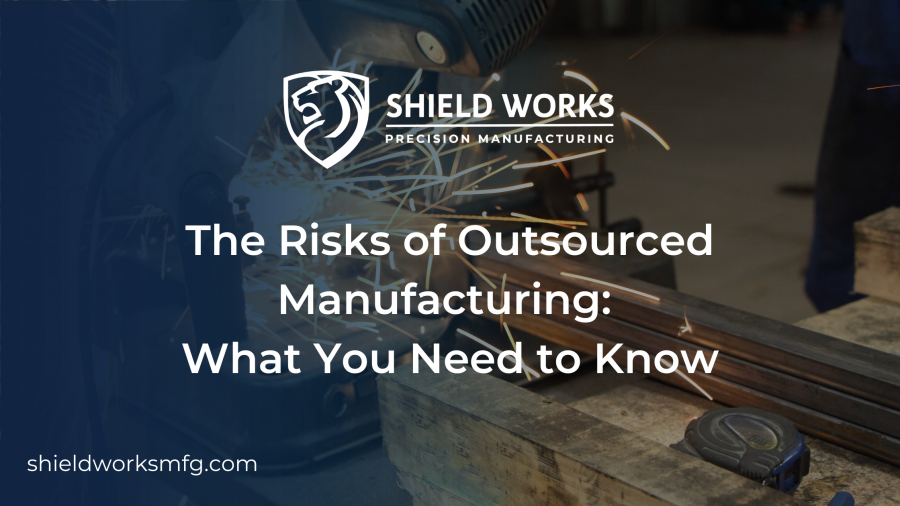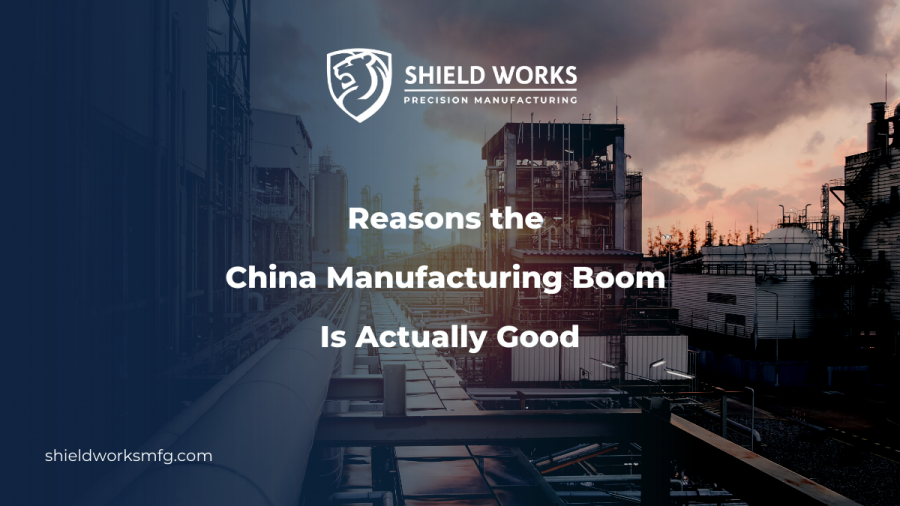Posts Tagged ‘China Manufacturing’
The Risks of Outsourced Manufacturing: What You Need to Know

When you outsource your manufacturing, you’re trusting someone else to handle the job of turning your idea into a tangible product. While this usually works out well and can bring significant cost savings to your company, there are risks involved with outsourcing that you should keep in mind as you consider outsourcing as an option for your business or organization. Read on to learn about some of the most common risks of outsourcing manufacturing and how to avoid them so that you can maximize your benefits and minimize your costs.
Supplier Risk
Direct arrangements with suppliers from any industry come with risks. However, the risk is greater when buying from an international supplier. Prior to outsourcing, you must conduct a thorough investigation.
Then, you need to conduct a thorough risk assessment using the possible markets and suppliers. Identify any potential issues with the provider’s possible suppliers.
It must include the supplier’s operations, quality, leadership, and labor. Check to see if their track record lives up to their promises.
By doing so, you will avoid disruptions caused by your supplier failing to follow through. You can also ask other helpful businesses who have used your potential supplier. As soon as you make your decision, you’ll gain insight into working with them.
Quality Assurance
The lead time, as a result, for transporting products is longer compared to domestic sources, if product failure occurs from an international source, which can cost you suffer severe business disruptions.
If the problems get severe, it can take months to resolve them. To mitigate this risk, you need to prepare detailed product specifications for your sources. You’ll periodically perform independent quality control inspections.
You may lose your reputation if your product quality declines. Avoid this by observing the manufacturing process for a few weeks. It is cheaper and ensures quality, so it’s better than having to recall a product.
Intellectual Property Protection
Don’t share sensitive information with your outsourced manufacturers until you check their origin country and their intellectual property rights. Otherwise, your proprietary information might be leaked.
In cases like this, IP laws are more relaxed in the manufacturer’s country. Depending on the product, you may find it better not to outsource anything. If your product undergoes regular updates, however, this might not be an issue.
You might overlook patent protection if you think you can produce better items faster and with better quality. This can happen when you pump out new products faster than the market can handle.
Transportation and Delivery
Outsourcing to a foreign service is tricky if you don’t take it one step at a time. If you do it poorly, the delivery will be delayed.
A common timeline for ordering and receiving your product should be important to your outsourced manufacturer. Think about whether they can meet a timeline for production. In case the total is greater than it has been, you must work to make the customer’s expectations fit reality.
One may also look for a workaround to restore the time to its correct place. Otherwise, you may accidentally erase all your work. Given the importance of this issue to customers, we’ll need to keep it at the forefront of our priorities.
Sourcing Labor
This type of conversation doesn’t happen as often, but when it does, it can hurt your brand. Make and fulfill your products with a manufacturer that follows humane standards.
It is especially important when it comes to labor laws and other relevant guidelines for employee safety that your manufacturer’s guidelines match your own country’s. It is your responsibility as well as your outsourced help to adhere to ILO guidelines if your country is a member.
Weather
Despite how it might seem, what your manufacturer does in relation to the weather can affect how it’s perceived. A rough bout of weather can lead to various delays. Doing so puts your brand in a negative spotlight because it has to be revealed what your labour force looks like.
How well your supply chain holds up to weather-related crises can affect your reputation, as well. Though they’re flawed, it’s not always best to steer clear of your brand name. As a result, you must put it before anything else.
Should You Outsource Manufacturing?
If your company is not ready for outsourcing, you should weigh the benefits of this decision. A number of benefits are available to you.
You will cut your spending as well as boost the productivity of your business by doing so. Popular demands are produced by many companies.
Additionally, you’ll avoid every aspect of manufacturing bureaucracy. It’s what slows businesses down, especially in countries with strict regulations.
Invest in Outsourced Manufacturing Today
While there are risks involved, partnering with an outsourcing manufacturing company can be helpful in boosting your business productivity. The first step is to find a reputable manufacturer. Use this advice to find the best provider.
Have you been considering manufacturing internationally? If so, please get in touch with Shield Works and we’ll talk about how our 17 years of outsourced manufacturing can help your business thrive!
Reasons the China Manufacturing Boom Is Actually Good

China produces over 28% of the world’s manufacturing. Because of the China manufacturing boom, it’s not surprising that China’s gotten the nickname “the world’s factory.”
But why is there an increase in China manufacturing? How can it benefit your business? And how has the COVID-19 pandemic affected global relations?
Read this guide to find out everything you want to know about the China manufacturing market and why it’s actually good for your business.
What’s Driving the China Manufacturing Boom?
There are several factors that contribute to the boom in China manufacturing.
For most people, the lower cost of labor is probably the first factor they’d consider. There are lower wages in China. This makes manufacturing much cheaper.
China is the most populous country in the world. This means there are more workers than jobs. That keeps the cost of labor relatively low.
However, certain provinces have begun enacting more laws to protect workers. This includes installing minimum wages throughout the country.
Manufacturing is still cheaper when outsourced to Chinese factories. But, the cost of production isn’t the only consideration you should take into account.
The Chinese-U.S. Business Ecosystem
Manufacturing isn’t the only part of industrial production one must consider. In fact, there is a large network to consider that includes:
- Suppliers
- Distributors
- Government agencies
- Customers
American companies such as Apple utilize China’s efficient supply chain. This efficiency helps them to keep costs down and margins high.
Most U.S. companies operating in China find it unrealistic economically to complete productions on U.S. soil.
Additionally, business relations remain strong between the U.S. and China. Though political tensions may be high, many businesses feel confident in their Chinese manufacturing relationships.
In fact, this is the most confidence many businesses have felt since the beginning of the COVID-19 pandemic.
Lower Compliance Standards
Product assembly in China does not have to meet certain guidelines American businesses must follow. For example, China is much more relaxed about the following standards:
- Involuntary and child labor
- Health and Safety Guidelines
- Wage laws
- Environmental protection laws
Though labor laws are changing in China, they are still far less strict than in the United States. This helps to save on labor costs.
Chinese factories also save on waste management. This is because environmental protection laws are not strictly enforced.
Savings on Taxes and Duties
In 1985, China enacted the export tax rebate policy. This policy abolished double taxation on exported goods. This was responsible for making Chinese manufacturing much more attractive to potential investors.
Exported goods in China are subject to 0% value-added tax (VAT). That means these products are exempt from VATs.
Chinese products are also exempt from import taxes. This keeps production costs low, which attracts more investors.
International Expansion
China is a massive pillar in the Asian market. The Asian market in general is growing at an extremely rapid rate.
Doing business in China helps to expand your reach to these valuable Asian markets.
These expansions can multiply your company’s business opportunities exponentially. You also streamline your ability to introduce products into markets across Asia, especially Chinese markets.
How Did COVID-19 Affect Chinese Manufacturing?
It’s no surprise that the COVID-19 pandemic affected the boom of Chinese manufacturing. China was, after all, the first country to experience the effects of the pandemic.
It is common practice for Chinese businesses to take a week off for Lunar New Year celebrations. In 2020, this break was extended. This was China’s attempt to stop the spread of COVID.
Unfortunately, like many American businesses, Chinese businesses experienced delays in production. Many workers became sick, slowing down manufacturing.
Additionally, issues in the global supply chain created fear around reliance on outsourced manufacturing. This included Chinese manufacturing.
Chinese Recovery in a Post-COVID Economy
However, Chinese factories continued on. Many of them capitalized on mask production to keep them operating throughout COVID.
Now, it appears that China’s manufacturing is on the come-up. However, since the roughest days of the pandemic, it would appear China has made a full recovery.
How Did the US-China Trade War Affect Chinese Manufacturing?
While in office, US President Donald Trump attempted to decouple the Chinese and US economies. This created a trade war that affected, and still affects, the manufacturing industry.
However, an annual member survey by the American Chamber of Commerce in Shanghai revealed that 92.1% of its members had no plans to leave China.
Even with Trump’s push, leaving Chinese manufacturing was not an attractive prospect to many companies. Most of these companies have revenues above $500 million USD.
How Is China Upgrading Its Manufacturing Industry?
The Chinese government’s goal is to have 30% of its gross domestic product (GDP) come from new industries. So what are they doing to meet this goal?
By 2025, China plans to have strong innovation in its manufacturing industry. They expect to use these innovations to drive high-quality growth.
Some manufacturing innovations China is currently working on include:
- Sharing production facilities
- Sharing tools and equipment amongst facilities
- Making intellectual resources such as designs and development practices public use
Their goal is to use this plan to boost resource allocation. This will help to improve efficiency and drive higher ROIs for business manufacturing in China.
Take Advantage of the Chinese Manufacturing Boom
So, you can see how Chinese manufacturing is a valuable market for American businesses.
The factors driving the China manufacturing boom can help to lower costs and boost your ROIs so that your business sees significant returns. Plus, you can streamline your business for introduction into the up-and-coming Asian markets.
Contact our team if you’re ready to begin manufacturing in China. With Shield Works, you can rest easy knowing you’re making the right choice for your business’s manufacturing needs.
